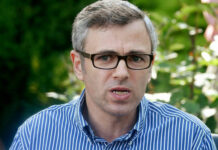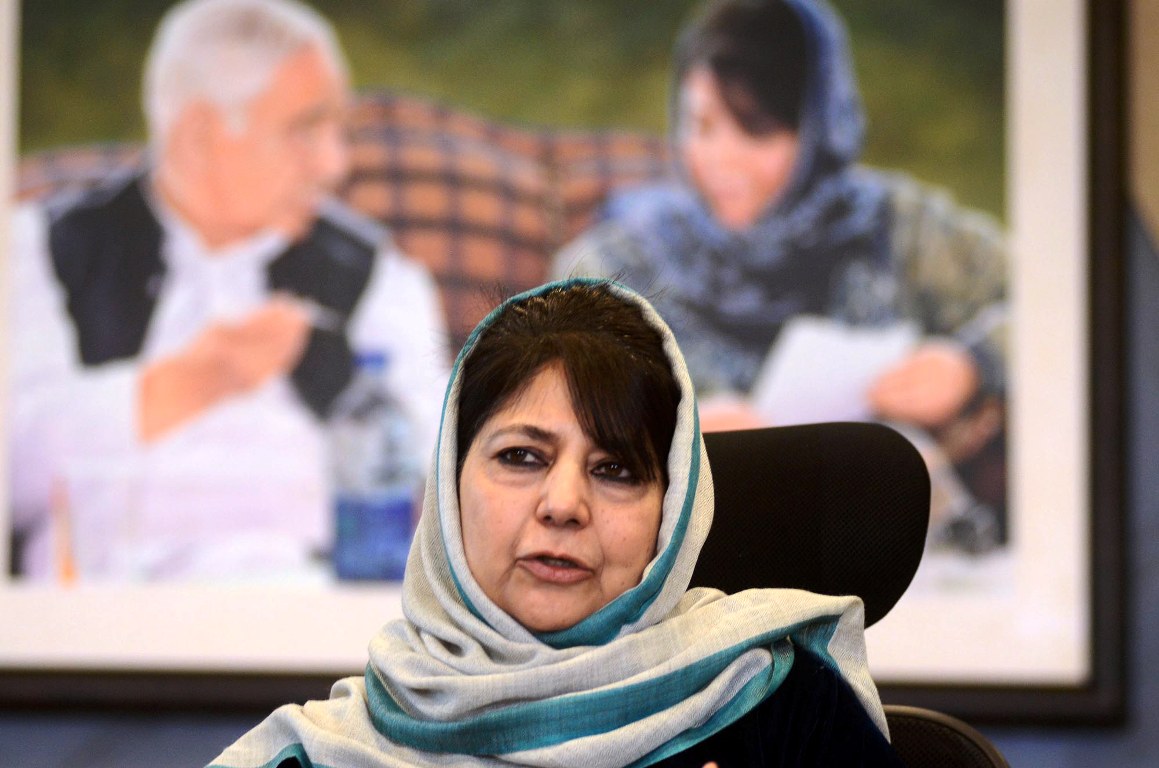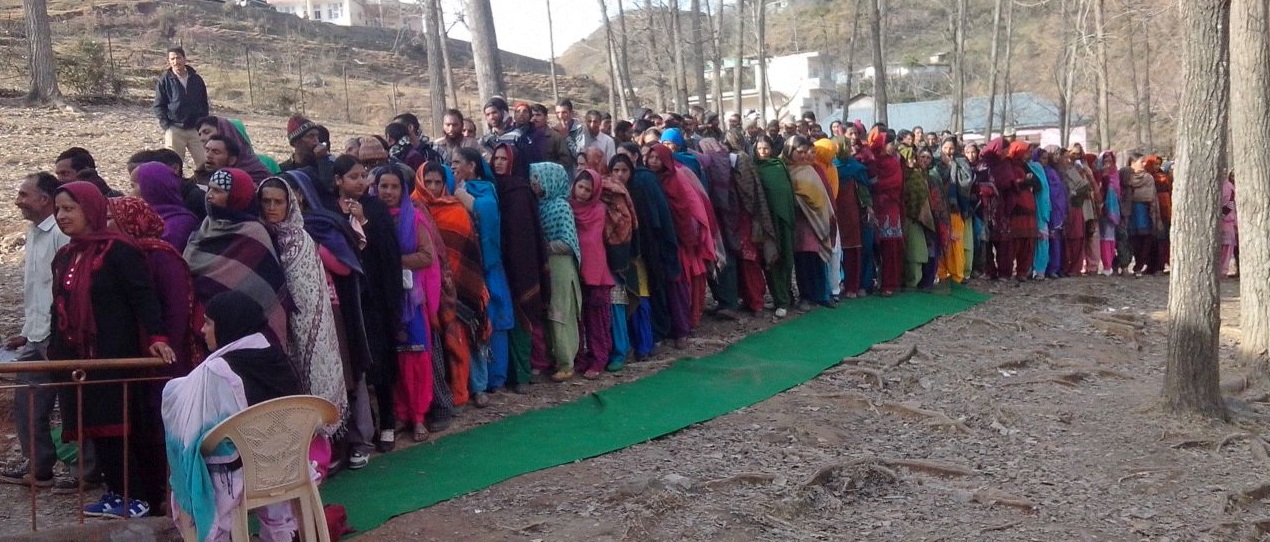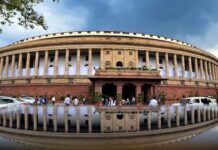SRINAGAR: India abstained from voting on a United Nations Human Rights Council (UNHRC) resolution to set up a fact-finding mission to investigate the alleged human rights violations committed against protesters in Iran. India was one of 16 abstentions on the resolution, sponsored by Germany and the Netherlands. However, 25 nations voted in favour of the resolution. The UNHRC agreed to probe Iran’s crackdown on anti-hijab protesters, the NDTV reported.
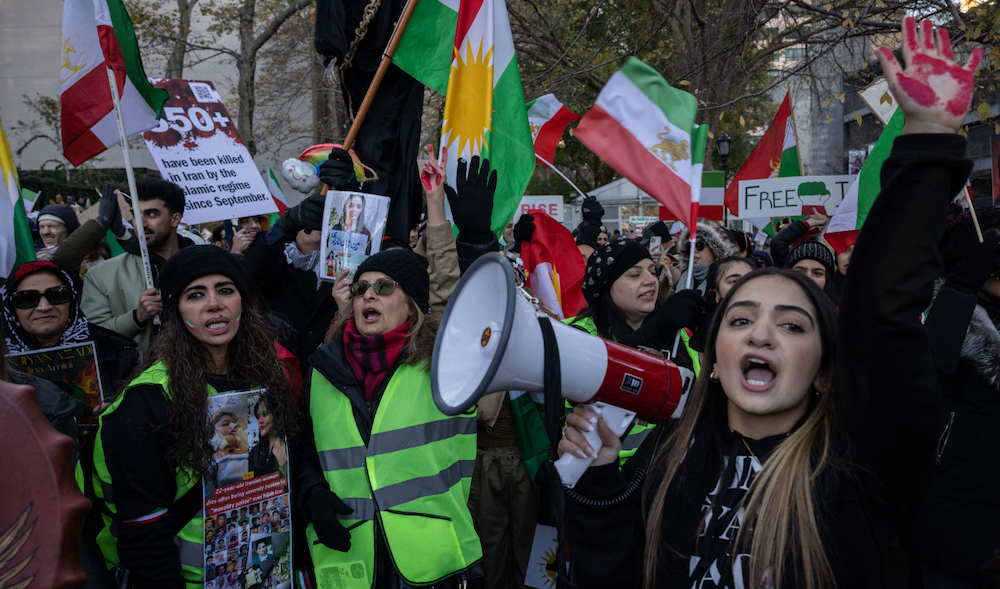
This resolution came amid the protests that started on September 16, 2022, after 22-year-old Mahsa Amini, who was allegedly taken into custody by Iran’s “moral” police for wearing an ‘inappropriate’ headscarf, died just days ahead of her birthday, drawing allegations of custodial violence.
Apart from India, Malaysia, Indonesia, UAE, and Kazakhstan had also abstained from the resolution. Meanwhile, Pakistan and China rejected the resolution.
What are Iranian Protests about?
Mahsa Amini, an Iranian Kurd, was taken into custody while she was visiting relatives in Tehran with her brother. Iran’s “morality” police allegedly challenged her about a few strands of hair that were showing from her standard hijab, the Guardian reported.
Her cousin Erfan Mortezaei claimed she was beaten in the van. An edited video recording from the station released by the police shows Amini standing alone, collapsing onto a chair and then the floor. She had had a stroke or a heart attack, but it took 30 minutes for ambulance staff to reach her and an hour and a half before she arrived at Kasra hospital.
Amini was in effect brain dead. Temporarily resuscitated, she was put on a life support machine but three days later, on September 16, she was formally pronounced dead. She was a few days short of her 23rd birthday.
It took three weeks for Iranian officials to produce a definitive official account of what happened, even though the hospital’s X-rays and post-mortem reports have long been widely available. The official narrative was that she had not died because of a blow to the head but from longstanding heart rhythm disorders.
The family had said Amini had a minor neurological condition, possibly a brain tumour when she was eight, but said it was under control through the use of levothyroxine, and that only recently a doctor had given her the all-clear.

Her condition does not rule out a brain seizure – possibly due to the deep distress of her arrest – but it aids the police case that she was not physically assaulted. The morality police have told the family they weren’t wearing body cameras, which would have proven what did or did not happen in the van.
The level of trust between Iranian officials and the family’s lawyers is close to zero.
Amini’s father, still distraught, has been reluctant to cooperate with the official parliamentary inquiry proposing a list of independent neurologists to examine her death.
Meanwhile, Amini’s full name was Jhina which also got mired in controversy because of her Kurdish ethnicity.
“Ethnic Kurds have long experienced discrimination in Kurdistan. Mahsa’s real name – Jhina – is Kurdish and as such could not be registered on her birth certificate as only Persian and some Islamic names are lawful. There are also laws against the teaching of the Kurdish language in schools. It so happens that my paternal homeland is the very town that Jhina Amini came from and so when I heard about the protests in Kurdistan, I prayed that my family would be safe,” says Kamin Mohammadi a writer, journalist and broadcaster specialising in Iran
The Gasht-e-Ershad
The Iranian Gasht-e-Irshad, in question post-Amini’s death, was established in 2005 with the task of “detaining” people who violate the Islamic dress code, usually concerning the wearing by women of hijabs covering their hair.
The guidance police, as it is called, consists of a van with a male crew accompanied by chador-clad females who stand at busy public places including shopping centres, squares, and subway stations to “detain” people for not wearing hijabs or not wearing them in accordance with government standards.
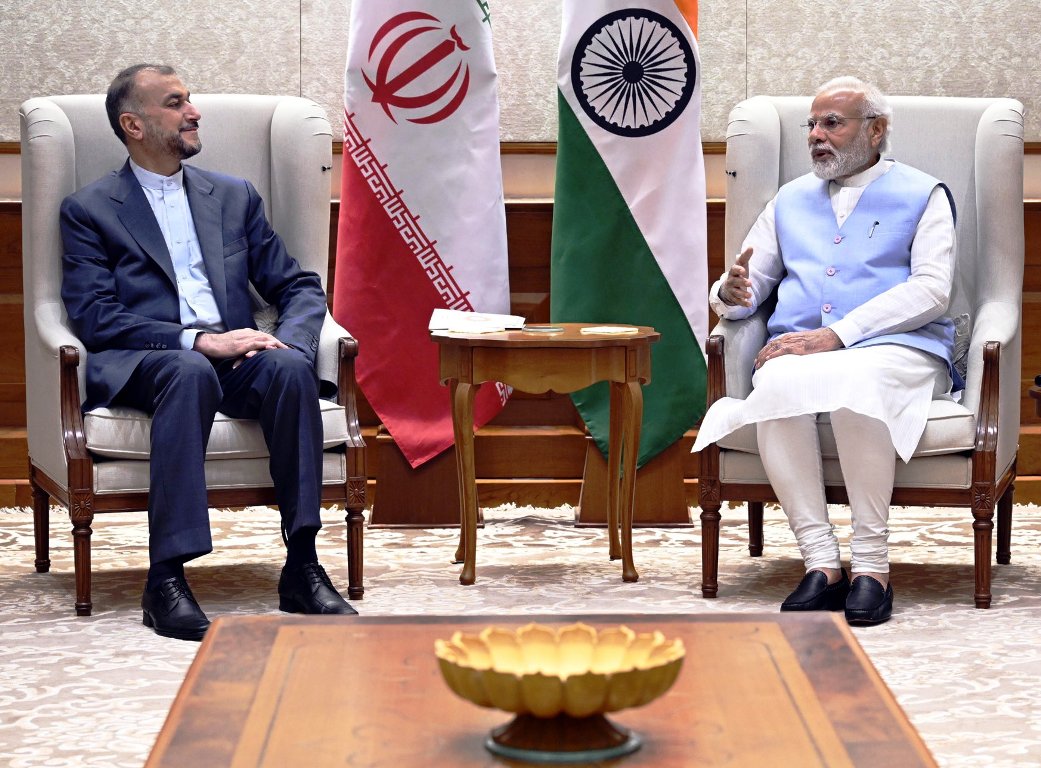
As per Amnesty International, “The Guidance Patrol also monitors immodest attire by men, “Western-style” haircuts worn by men, male-female fraternization, violations of restrictions on the wearing of makeup, and the wearing of bright colours, tight clothing, torn jeans, and short trousers. Violations include too much hair showing from under a headscarf, and a boyfriend and girlfriend taking a walk together.”
Kurdish Song Leading Protests
Amini’s death caused protests all over Iran, currently led under Ayatollah Ali Khamenei’s rule, with the famous Kurdish slogan: ‘Jin, Jiyan, Azadi’ meaning women, life, and freedom dominating the protests which began from her funeral in the Saggez area. The Farsi version of the slogan Zan, Zendegi, Azadi was also heard in the capital city of Tehran.
The slogan was first used in the Kurdish freedom movement of the late 20th century. Members of the Kurdish women’s movement, a branch of the Kurdish independence movement that was established on grassroots action in response to persecution by the governments of Iran, Iraq, Turkey, and Syria, were the first to use the term. It was popularised further by famous Kurdish figures such as Abdullah Öcalan, the founder of PKK (Kurdistan Workers’ Party), in his anti-capitalist and anti-patriarchal writings. It was also used by Kurds in the fight against ISIS.
The Daily-O reported that the death toll related to the Iran protests has reached 230 including children and teenagers, and over 12,500 have been detained.
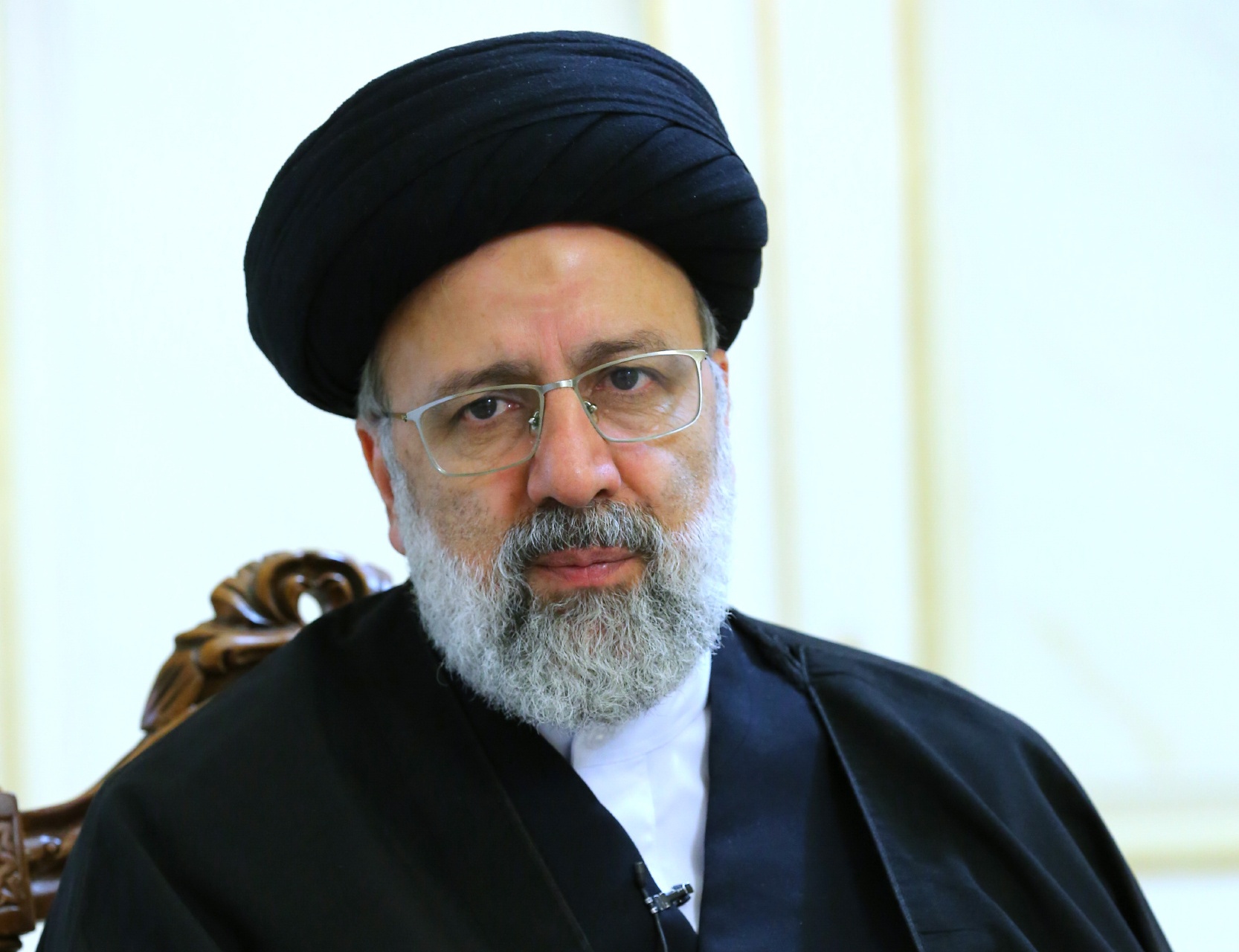
Who is Protesting?
The protests after the death of Amini has witnessed women and men along with actors, athletes, journalists, the Iranian diaspora along with people from all strata of society protesting.
Four days after Amini’s funeral, 16-year-old Iranian teenager Nika Shakarami disappeared in Tehran during the protests. Her family was informed of her death ten days later. She had died under suspicious circumstances allegedly involving violence by security forces. After her body was identified by her family, they planned to bury her in Khorramabad, but the body was allegedly stolen by Iranian authorities and instead buried in Hayat-ol-Gheyb, reportedly to exercise leverage over her family and to avoid a funeral procession which could cause further protests.
With casualties and injuries rising, Shervin Hajipour, a 25-year-old Iranian singer wrote and sang the song Baraye which had now become an “anthem” for the protesters.
For the lyrics, he drew on tweets by his fellow Iranians explaining their reasons for joining the rapidly expanding protests. They were many.
“For dancing in the streets, for our fear when kissing loved ones, for my sister, your sister, our sisters, and for the changing of rotted minds,” these replies on Twitter became the lyrics.
The song was released on September 28 and within a day, according to some estimates, it received more than 40 million views, quickly spreading across the nation and to the Iranian diaspora.
The government responded by arresting Hajipour, and soon the song was removed from his Instagram page, the Los Angeles Times reported.
However, the arrest enraged the protesters further unifying people across socioeconomic lines, geographic regions and ethnicities.
The song was sung by Cold Play band’s lead vocalist Chris Martin in Farsi with exiled Iranian artist Golshifteh Farahani during their concert in Argentina’s Buenos Aires on October 29.
Athletes Execution
Prior to Amini’s death, Navid Afkari, a 27-year-old wrestling champion, was sentenced to death over the murder of a security guard during a wave of anti-government protests in 2018, the BBC reported.
It was alleged that he had been tortured into making a confession. Human rights organisation Amnesty International described Afkari’s execution as a “travesty of justice”.
In a leaked recording released by the group, Afkari says: “If I am executed, I want you to know that an innocent person, even though he tried and fought with all his strength to be heard, was executed.”
There had been many calls to stop the execution, including from a union representing 85,000 athletes worldwide.
In 2018, protesters in cities across Iran took to the streets over economic hardship and political repression.
The anger of his death is also being vented in the current protests leading to Iran’s national football team refusing to sing the national anthem ahead of their opening game in Qatar against England during the ongoing FIFA World Cup 2022.
In Iran’s second match at the World Cup fans supporting the Iranian government clashed with those protesting against it. The stadium security seized flags, T-shirts and other items expressing support for the protest movement. Interestingly, host Qatar also abstained in the UNHRC in anti-Iran resolution.
Some fans were stopped by stadium security from bringing in Persian pre-revolutionary flags to a match against Wales at the Ahmad Bin Ali Stadium. Others carrying such flags had them ripped from their hands by pro-government Iran fans, who also shouted insults at fans wearing T-shirts with the slogan of the protest movement gripping the country, “Woman, Life, Freedom.”
An Airplane Flight Story
Iran had witnessed protests after a Ukraine International Airlines Flight 752 was shot down by Iranian Revolutionary Guard in January 2020 killing all 176 people on board. Then, Tehran had admitted that the Ukrainian airliner was brought down after it mistook the aircraft for a hostile aircraft. The protests had raged on and then dwindled with no “justice”.
Now, the families of the victims of the airplane are rallying the diaspora in the current protests.
Upon a call by the Association of Families of Flight PS752 Victims, tens of thousands of members of the Iranian diaspora held long lines of people holding each other’s hands to express solidarity with the people of Iran, who are holding daily protest rallies since mid-September when 22-year-old Mahsa Amini was killed in the custody of hijab police.
The main organizer of the global event, Hamed Esmaeilion – the Canada-based activist who lost his wife and daughter in the downing of the Ukrainian Airlines flight – has spearheaded several international events in support of the protests.
The Iranian expatriate communities are holding gatherings and creating human chains in at least 80 cities as a unifying gesture in support of the ongoing protests in Iran.
In some cities, the lines are hundreds of meters long but in cities with a large Iranian population the lines are expected to extend to over 10 kilometres, Iran International reported.
Meanwhile, Iranian diaspora leaders clashed over how best to support the protest movement in Iran during a high-profile public forum on Saturday, with some levelling accusations that others were essentially lobbyists for the Tehran government.
The claims, which emerged during the Halifax International Security Forum, laid bare some of the tensions among Iranian activists at a time when protesters are openly calling for the end of the regime. While most diaspora activists say they fully support the protesters, they often criticize each other’s tactics and motives.
Actors, Doctors and Media
The Iranian protests were joined by actors with famous celebrities taking off their head veils to show solidarity.
Iranian-born, British actress Nazanin Boniadi called on Hollywood to do more to bring attention to the political upheaval over women’s “rights” in Iran. The Lord of the Rings: The Rings of Power star delivered a speech at the Academy Women’s Luncheon presented by Chanel, held at the Academy Museum in Los Angeles.
“Iranian women have caused a paradigm shift by openly defying a system of patriarchal misogyny that has subjugated them for four decades, and they’ve gained allies across different sectors of Iranian society while doing it. Surely, we have a lot to learn from them,” she said before the crowd.
The journalists have also joined protests with a new social media campaign, “White Wednesday” against women being forced to wear a headscarf.
Using the hashtag #whitewednesdays, citizens have been posting pictures and videos of themselves wearing white headscarves or pieces of white clothing as symbols of protest.
The idea is the brainchild of Masih Alinejad, founder of My Stealthy Freedom, an online movement opposed to the mandatory dress code.
Iran’s doctors joined the protest, the Washington Post reported. Hundreds of doctors gathered outside Iran’s Medical Council in Tehran on October 26 to take a stand — protesting the presence of security forces in hospitals and the arrest and intimidation of their colleagues during two months of nationwide unrest, the Post reported.
The BMJ, a doctor’s international collective, alleged that doctors are increasingly finding themselves on the front lines of the protests against Iran’s “theocratic” regime and its religious “morality” police as they struggle to treat thousands of injured protesters who fear going to hospitals where police wait to arrest them.
In the most serious incident so far, police opened fire on a doctors’ protest in front of the Tehran Medical Council building on October, 26 wounding several and killing a young surgeon, Parisa Bahmani, the BMJ claimed.
Evin Prison Controversy
On October 16, four prisoners died and 61 were injured following a major fire at Iran’s notorious Evin prison, according to an Iranian state news agency where scores of protesters were detained.
As per BBC, state media has suggested the events in Evin prison are not linked to the ongoing protests, quoting an official who blamed “criminal elements” for the fire.
Speaking from inside the prison, Tehran’s governor told state TV that there was a riot in a wing of the prison housing petty criminals.
Meanwhile, Iran’s Mizan News has said the injured developed breathing difficulties during a fire at the prison’s sewing workshop. Four of the injured are in critical condition, it reported.
Some journalists on social media accused the authorities of “setting the prison ablaze intentionally” as a high-profile political prisoner was sent home before it broke out. Mehdi Hashemi Rafsanjani – son of Iran’s late former president Akbar Hashemi Rafsanjani – was given “early temporary release”, according to his brother.
Government Version
Meanwhile, Iran’s supreme leader, Ayatollah Ali Khamenei, blamed the United States and Israel for protests accusing the countries of trying to stop Iran’s “progress”, Al Jazeera reported. Khamenei branded the anti-government protests as “riots”.
The 83-year-old leader said, “I say explicitly that these riots and this insecurity were a design by the US and the occupying, fake Zionist regime [Israel] and those who are paid by them, and some traitorous Iranians abroad helped them,” Khamenei told graduating cadets at a police university in Tehran.
“In the accident that happened, a young woman passed away, which also pained us, but reactions to her death before investigations [take place] … when some come to make the streets insecure, burn Qurans, take hijabs off covered women, and burn mosques and people’s cars – they’re not a normal, natural reaction,” Khamenei said while surrounded by the chiefs of the police, army and the Islamic Revolutionary Guard Corps (IRGC).
Khamenei sought to further cast the unrest as part of a foreign effort to destabilise Iran, saying another “excuse” would have been found to destabilise the country if it were not for Amini’s death.
Iranian judicial authorities have indicted protesters who had been arrested in recent weeks during anti-government demonstrations that rights groups say resulted in several deaths.
The chief justice of Kurdistan province Tuesday indicted 110 people.
The move came one day after Hossein Fazli Harikandi, the chief justice of Alborz province, issued indictments for 201 protesters.
In Qazvin province, the prosecutor said 55 protesters were being indicted.
Ali Salehi, the public prosecutor of Tehran, issued indictments for 315 people on charges of gathering and colluding with the intention of acting against the security of the country, propaganda against the system and disturbance of public order.
Of Iran’s population of 84 million people with a literacy rate of 97 per cent, women make up 65 per cent of university graduates.




